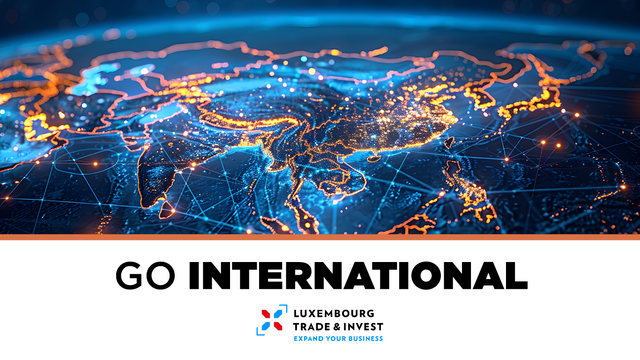
Chapitres
In 2025, a temporary growth acceleration is projected, fueled by a one-off expansion in oil production and associated export growth and further fiscal stimulus. Growth may moderate to 3.0–3.5 percent post-2025, due to persistently low productivity and declining investment levels, underscoring the need for policies to diversify the economy and support new levers of economic growth. Inflation is gradually moderating but remains above the target of 5 percent.
Source: World Bank Group
Vos conseillers auprès de la Chambre de Commerce

Regina Khvastunova
Contactez-nous: kazakhstan@cc.lu
Indicateurs clés
- Surface
- 2,724,900 km2
- Population
- 20.6 mln (2024)
- Type de gouvernement
- presidential republic
- Langues
- Kazakh (official, Qazaq), Russian (official, used in everyday business, designated the "language of interethnic communication")
- PIB
- 288.1billion (2024)
- Taux de croissance
- +5.5% (2025 est.)
- HDI
- 51
- Capitale
- Astana
Indicateurs macroéconomiques
Fiscal policy continues to be expansionary with the deficit expected to remain elevated. With expenditure growth outpacing revenue gains, the overall fiscal deficit is projected at 3.1 percent in 2025 before easing slightly to 2.7 percent in 2026. A new Tax Code underway now offers an opportunity to raise revenues through modernizing tax policy. While public and publicly guaranteed debt remains low and manageable at 24 percent of GDP, high domestic borrowing costs can reduce fiscal space. The current account deficit is projected to widen in 2025–2026 as exports moderate and the trade surplus is expected to shrink.
The outlook faces several downside risks. First, a decline in global oil demand/prices would harm exports, fiscal revenues, and growth, and further increase exchange rate volatility. Second, prolonged fiscal expansion may further strain the fiscal balance, contribute to inflationary pressures, and necessitate a prolonged period of tight monetary policy, keeping borrowing costs high. Continued domestic borrowing risks crowding out the private sector and adding to debt servicing cost. Third, the growing frequency of extreme weather events threatens agricultural productivity, critical infrastructure, and economic stability, potentially stoking inflation and prompting further fiscal intervention.
Source: World Bank Group
IMF Statistics:
| Subject descriptor | 2023 | 2024 | 2025 | 2026 | 2027 |
|---|---|---|---|---|---|
|
All Items, Consumer price index (CPI), Period average, percent change Percent (Units) |
14.522 |
8.676 |
11.376 |
11.209 |
10.495 |
|
Current account balance (credit less debit), Percent of GDP Percent (Units) |
-3.608 |
-1.709 |
-3.776 |
-3.98 |
-3.723 |
|
Current account balance (credit less debit), US dollar US dollar (Billions) |
-9.448 |
-4.982 |
-11.33 |
-12.726 |
-12.958 |
|
Exports of goods and services, Volume, Free on board (FOB), Percent change Percent (Units) |
16.849 |
3.439 |
8.603 |
4.456 |
4.292 |
|
Gross domestic product (GDP), Constant prices, Percent change Percent (Units) |
5.1 |
4.8 |
5.852 |
4.775 |
4.169 |
|
Gross domestic product (GDP), Current prices, Per capita, US dollar US dollar (Units) |
13157.579 |
14459.336 |
14722.579 |
15527.082 |
16724.111 |
|
Gross domestic product (GDP), Current prices, US dollar US dollar (Billions) |
261.84 |
291.48 |
300.052 |
319.77 |
348.039 |
|
Imports of goods and services, Volume, Cost insurance freight (CIF), Percent change Percent (Units) |
25.308 |
3.266 |
2.04 |
2.569 |
3.617 |
|
Unemployment rate |
4.725 |
4.65 |
4.638 |
4.574 |
4.527 |
Le Luxembourg et le pays
Existing conventions and agreements
Non double taxation agreement
In order to promote international economic and financial relations in the interest of the Grand Duchy of Luxembourg, the Luxembourg government negotiates bilateral agreements for the avoidance of double taxation and prevent fiscal evasion with respect to Taxes on Income and on fortune with third countries.
Convention from 26.06.2008 (Memorial 2013, A No.114, p.1733)
Effective as of 01.01.2014 (Memorial 2013, A No.114, p.1733)
Amendment of the Convention from 03.05.2012 (Memorial 2013, A No.114, p.1745)
Effective as of 01.01.2014 (Memorial 2013, A No.114, p.1733)
Informations supplémentaires
Contact points in Kazakhstan
Embassy of the Grand Duchy of Luxembourg in Kazakhstan
Ambassador with residence in Moscow: Mr Tom Reisen
Khrouchtchevsky Pereoulok 3
119034 Moscou
Russia
Tel.: (+7-495) 786 66 63
Consular Tel.: (+7–495) 786 66 65
Fax:(+7-495) 786 66 69
Consular Fax: (+7-499) 786 66 67
E-Mail: moscou.amb@mae.etat.lu
Website: www.moscou.mae.lu



